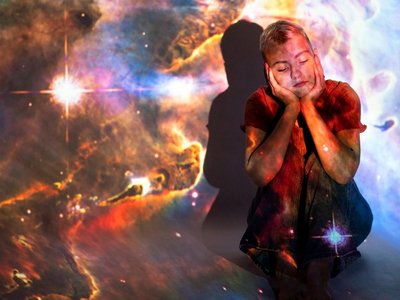

What role does art play in science communication? Which formats can be used to present research findings in a particularly interesting way so that they reach many people? These and other questions relating to accessibility, target groups and cooperation were the focus of the joint event organised by the two OeAD divisions Public Science and Cultural Education with Schools.
Current projects and formats
The guests on the podium reported on their projects and initiatives with which they are already successfully organising artistic science education.
Nora Dirisamer (Johannes Kepler University Linz) presented the Sparkling Science project ‘Circus of Knowledge’, in which various scientific topics are presented with dance, theatre and music together with schools - the artistic interventions and their effects are also researched from an educational science perspective.
Victoria Primus gave insights into her workshop format ‘Big Bang! We are all stardust", which she has been offering for several years. Through dance, children experience an embodiment of scientific phenomena such as the Big Bang and the development of life on Earth. This expands and strengthens their awareness of the environment.
Sonja Prlić (Mozarteum University Salzburg) used the ‘schnitt#stellen’ project to demonstrate the participatory potential of games for dealing with scientific issues. Young people co-designed the formats and content for the game ‘Black Day’ and critically scrutinised the practices of social media platforms.
Helmut Jungwirth (University of Graz & Science Busters) described the recipe for success of the Science Busters, who use cabaret to address scientific issues and have thus achieved a high level of recognition on stage, television and radio. In 2016, the University of Graz also established Austria's first professorship for science communication, held by Helmut Jungwirth.
Art as a door opener to science
In the subsequent discussion, moderated by Xaver Forthuber (Ö1), the experts discussed best practices as well as obstacles to the realisation of artistic science communication. In addition to limited time and financial resources, it is also primarily possible to reach people who are already interested in science and culture. This is precisely why working with schools is important, as all children and young people can potentially be reached here. OeAD programmes such as Sparkling Science, Culture:Education and the Children's Universities provide a framework for this. In addition, outreach formats and early awareness-raising among students can help to reach more people.
The entire event can be watched in the recording on YouTube. The event language was German.
